Caria
Q1123411Caria: the southwest of modern Turkey, incorporated in c.545 BCE the ancient Achaemenid empire as the satrapy Karkâ. Its capital was Halicarnassus (modern Bodrum).
Early history
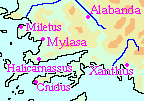
Caria and the Carians are mentioned for the first time in the cuneiform texts of the Old Assyrian and Hittite Empires, i.e., between c.1800 and c.1200. The country was called Karkissa. The people are absent from the Egyptian texts of this age.
After a gap of some four centuries in which they are mentioned only once, the first to mention the Carians is the legendary Greek poet Homer. In the Catalogue of ships, he tells that they lived in Miletus, on the Mycale peninsula, and along the river Meander. In the Trojan War, they had, according to the poet, sided with the Trojans.note This is a remarkable piece of information, because in Homer's days, Miletus was considered a Greek town; the fact that it is called Carian indicates that the catalogue of ships contains some very old information. In the fifth century, the Greeks thought that the Carians had arrived in Caria from the islands of the Ionian Sea, whereas the Carians claimed to be indigenous. Homer confirms their story.
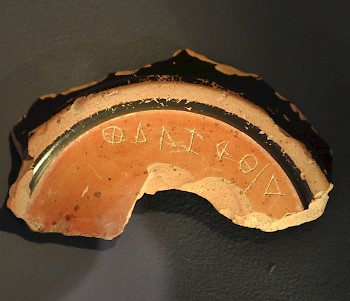
It is also confirmed by modern linguistics: the Carian language belongs to the Anatolian branch of the Indo-European languages. It is related to Luwian, Lycian and Lydian, the languages spoken to the southeast and north of Caria. Had the Carians arrived in their country from the west, their language would have been closer to Greek.
It seems that the Greeks settled on the coast in the dark ages between c.1200 and c.800, where they and the Carians mixed.note According to the Greek researcher Herodotus of Halicarnassus (fifth century BCE), the inhabitants of Miletus spoke Greek with a Carian accent.note Herodotus himself is also a good example of the close ties between the Carians and Greeks: his father is called Lyxes, which is the Greek rendering of a good Carian name, Lukhsu. Because of his descent and birth place, Herodotus is one of our most important sources.
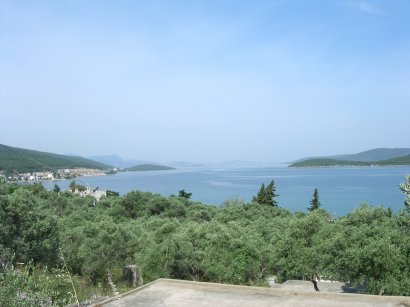
Caria is, like Greece, a country of mountains and valleys, poor in agricultural and other resources - in comparison with Egypt and Babylonia a backward country. Hilltops were fortified and there were several villages in the valleys, but there were hardly any cities. Because of their disparate country, the Carians were divided; when they learned to read and write, every village used its own version of the Phoenician alphabet.
What united the Carians, however, was their religion. One of their ritual centers was Mylasa, where they venerated a male supreme god, called 'the Carian Zeus' by Herodotus. Unlike his Greek colleague, this Zeus was an army god. One of the Carian goddesses was Hecate, who was responsible for road crossings and became notorious in Greece as the source of witchcraft. Herodotus calls her Athena and tells that her priestess got a beard when a disaster was appending.note On mount Latmos near Miletus, the Carians venerated Endymion, who had been the lover of the Moon and had procreated as many children as there are days in the year. Endymion was sleeping eternally, a story that the Greeks told about Zeus' father Kronos.
Pharaoh's mercenaries
Like the Swiss, the Gurkhas, and other mountain people, the Carians were forced to become mercenaries. Their country was too poor to maintain a large population, and younger sons went overseas to build a new future. They were military specialists and it is no coincidence that Herodotus writes that the Greeks had been indebted to the Carians for three military inventions: making shields with handles, putting devices on shields, and fitting crests on helmets.note Because of this last invention, the Persians called the Carians 'cocks'.
The first reference to Carian mercenaries can be found in the Biblical book of Kings, where we read about Carians in Judah.note The books of Kings were probably composed in the sixth century, but the information stems from older sources; this is the only mentioning of the Carians in the dark ages.
The Carians, however, were especially famous because they served the Egyptian pharaoh. Our main source is, again, Herodotus. He tells us that the first to employ these men was pharaoh Psammetichus I (664-610),note probably at the beginning of his reign. Some circumstantial evidence supports Herodotus' words, because archaeologists have discovered several settlements in the western part of the delta of the Nile that were founded by people from the Aegean. These settlements can be dated in the seventh century.
The Carians remained active in Egyptian service. They are known to have fought against the Nubians (in modern Sudan) in c.593; on their return, they visited Assuan and left inscriptions. According to an Egyptian stela now in Cairo, they played an important role during the coup d'état of Amasis (570), who gave the Carians a new base near the Egyptian capital Memphis.
When the Persian king Cambyses invaded Egypt in 525 BCE, the Carian contingents were still there, serving king Psammetichus III. According to Herodotus, they sacrificed children before they offered battle against the invaders.note
They managed to switch sides, however. (They were not the only ones: even the commander of Egyptian navy, Wedjahor-Resne, deserted his king.) In Egyptian sources from the Persian age, we still find Carians, now serving a new lord. One of the latest examples is an Aramaic papyrus dated to January 12, 411. Seven years later, the Egyptians became independent again; this time, the Carians were unable to switch sides. The collaborators must have been dismissed.
The Persian period
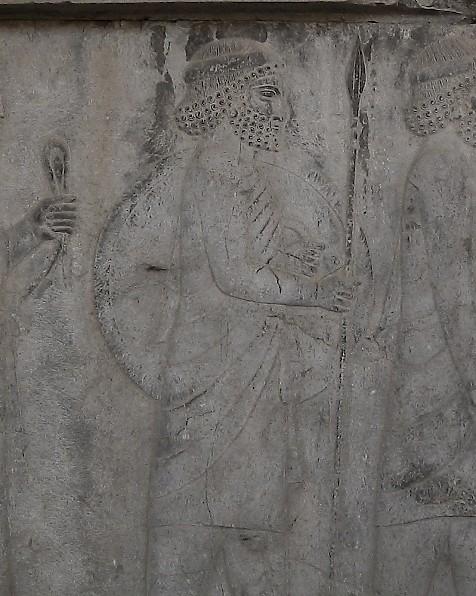
Meanwhile, their homeland had been subjected to the Lydian king Alyattes, and, later, to the Persians. This happened after the Persian king Cyrus the Great had defeated the powerful king of Lydia, Croesus, who had had some influence in Caria. This is usually dated to 547, but this is probably inaccurate. Next year, the Lydians revolted, but Cyrus sent his general Harpagus, who subjected them again. This time, he also took the Greek cities on the coast and then moved to the south, where he subdued the Carians and the Lycians.
The Carians offered their services to their new masters. They are mentioned in cuneiform documents from Borsippa in Babylonia and from the Persian capital Persepolis. When the Macedonian king Alexander the Great conquered the Achaemenid empire, he discovered a Carian settlement in the neighborhood of modern Baghdad. These Carians cannot have been deported from their homeland, but must have formed a military colony, because it was a very strategic place, commanding the Silk road.
Initially, the Carians seem to have retained some kind of independence. In the Behistun inscription, which was made in 520 BCE, they are not mentioned among the nations subject to king Darius I the Great, but an inscription that was made about five years later, known as DPe, does mention them (go here for these Empire texts.)
After 499, they joined the revolt of the Ionians against the Persians.note They were twice defeated by the Persians, but in a third battle they annihilated their enemies - not even their generals survived. Although Darius and his successors have claimed overlordship, it seems that the Carians were always able to keep some degree of independence. The Persians knew that they were good soldiers, and after all, their country was poor, so there was no need to really conquer it.
However, the Persians were present. In 1974, archaeologists have found a threelingual inscription from the time Artaxerxes IV Arses in Xanthus (in the southeast) and one of the languages was Aramaic, the language of the Persian bureaucracy. The center of the Persian administration in Caria was Halicarnassus. The Carian queen Artemisia loyally supported the Persian king Xerxes when he invaded Greece in 480.
However, after 469/466, parts of Caria were conquered by the Athenians. They remained more or less loyal to these Greeks until 412, when they returned to Persia. Again, they retained some freedom.
The Hecatomnid dynasty
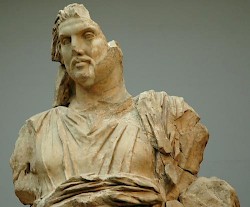
At the beginning of the fourth century, the Carians gained even more independence: they were ruled by satraps of Carian descent. The first of these was Hecatomnus of Mylasa (391-377), who was not only satrap of Caria, but also of Miletus. He seems to have been fascinated by Greek culture, but was loyal to the Persian king and -from a religious point of view- always remained a Carian.
He was succeeded by his son Maussolus. When he became sole ruler, the Achaemenid empire was in decline, but Maussolus remained loyal. For instance, he fought for the great king against Ariobarzanes, a rebel satrap in the northwest of modern Turkey (365). But almost immediately after this war, he took part in the Revolt of the Satraps: Maussolus, Orontes of Armenia, Autophradates of Lydia and Datames of northern Turkey joined forces against their king, with support of the pharaohs of Egypt, Nectanebo I, Teos, and Nectanebo II. Although they were defeated, king Artaxerxes III Ochus had to reinstall Maussolus as satrap of Caria. Even though the Persians retained a garrison at Halicarnassus, Maussolus had in fact become independent, and several ancient sources call him "king".
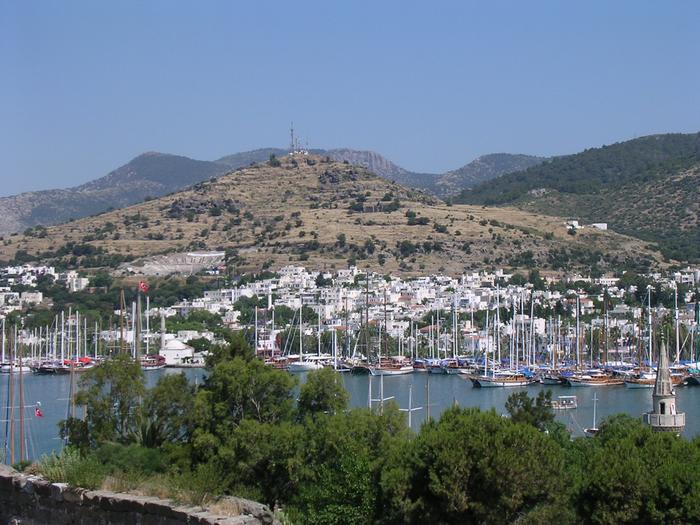
One of the most remarkable aspects of his reign is his strict adherence to the ancient cults of Caria. Although it was not unusual for the dynasts of what is now Turkey to sacrifice to the Persian supreme god Ahuramazda, or to venerate the Greek gods, none of these religious beliefs can be attested for Maussolus.
In 357, he helped the Athenian allies, who had revolted against Athens. Some of these allies - Chios, Kos, Rhodes, and Byzantium - became federates of Maussolus. This was his usual policy: he ruled Caria, had allies abroad, and left the towns in his territory more or less autonomous. This model was copied by later rulers.
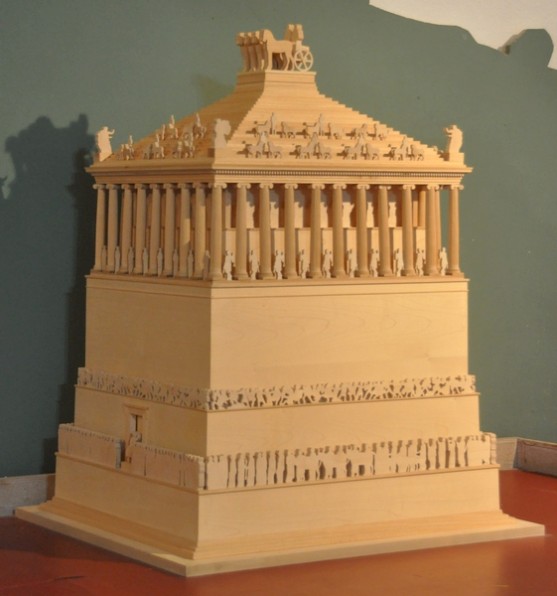
Between 370 and 365, Maussolus returned the Carian residence to Halicarnassus. (His father had resided in Mylasa.) The city was fortified with modern walls and received many new inhabitants. Its most famous building was the monument that the satrap built for himself, which has become known as the Mausoleum. It was considered one of the seven wonders of the ancient world.
Maussolus died in 353. He was succeeded by his sister (and wife) Artemisia - she invited Greek artists to finish the Mausoleum -, his brothers Idrieus and Pixodarus and finally his younger sister Ada. They were quarreling. When Alexander the Great approached Caria in 334, Ada opened negotiations and became the new queen of Caria.
| Hecatomnus |
|
| Maussolus |
|
| Artemisia |
|
| Idrieus |
|
| Ada (first reign) |
|
| Pixodarus |
|
| Ada (second reign) |
|
After Alexander's death, his successors contested the possession of Caria; first ruled by Antigonus Monophthalmus, it became part of the empire of Lysimachus in 301, and later became a province op the Ptolemaic empire, only to change into Seleucid hands before the mid-third century. In 188, the Romans defeated the Seleucids; the conquerors divided the country between the Pergamene kingdom in the north and Rhodes in the south. In 129, the Romans decided to annex the Pergamene part of Caria, which became part of their province Asia. The Rhodian part retained some of its independence, until it was, together with Rhodes, conquered by the Roman general Brutus in 42 BCE.
The area was profoundly romanized, as can be seen in a provincial town like Aphrodisias, which has splendid archaeological remains.